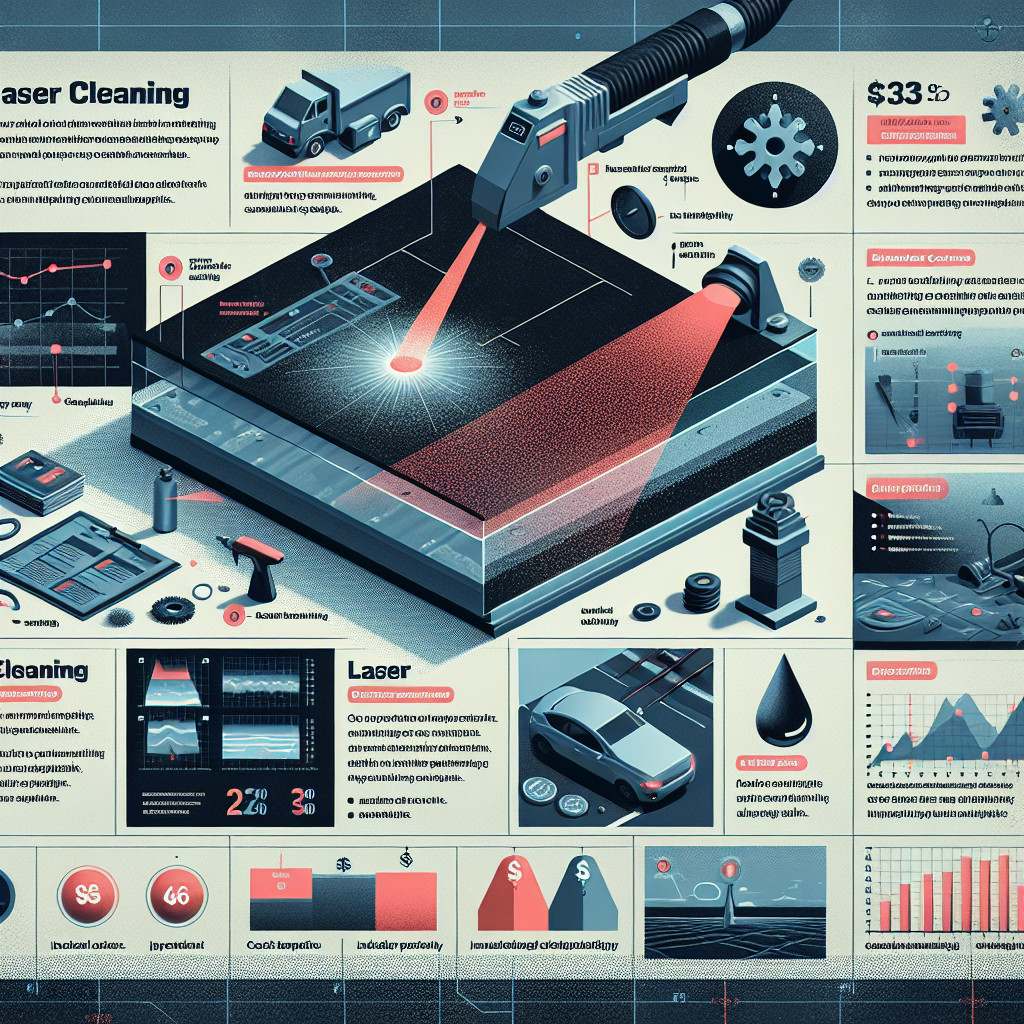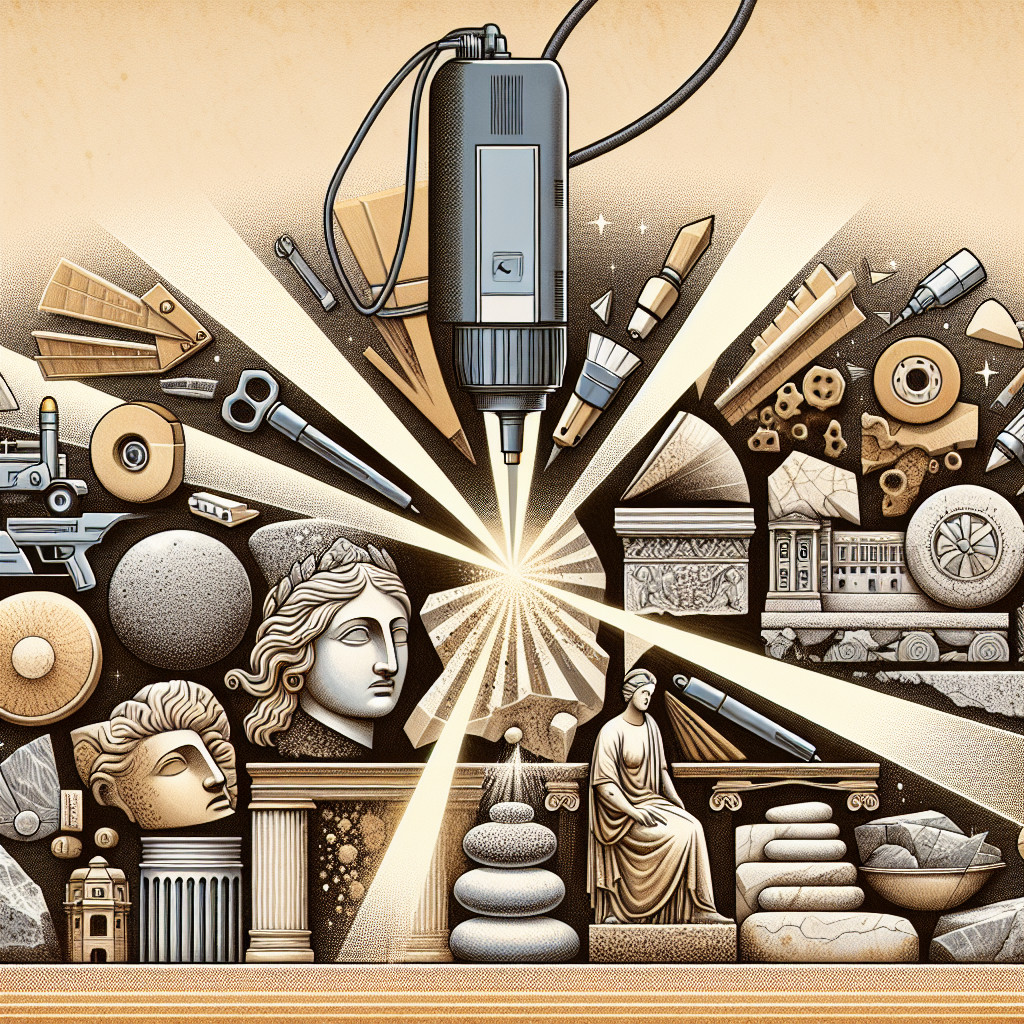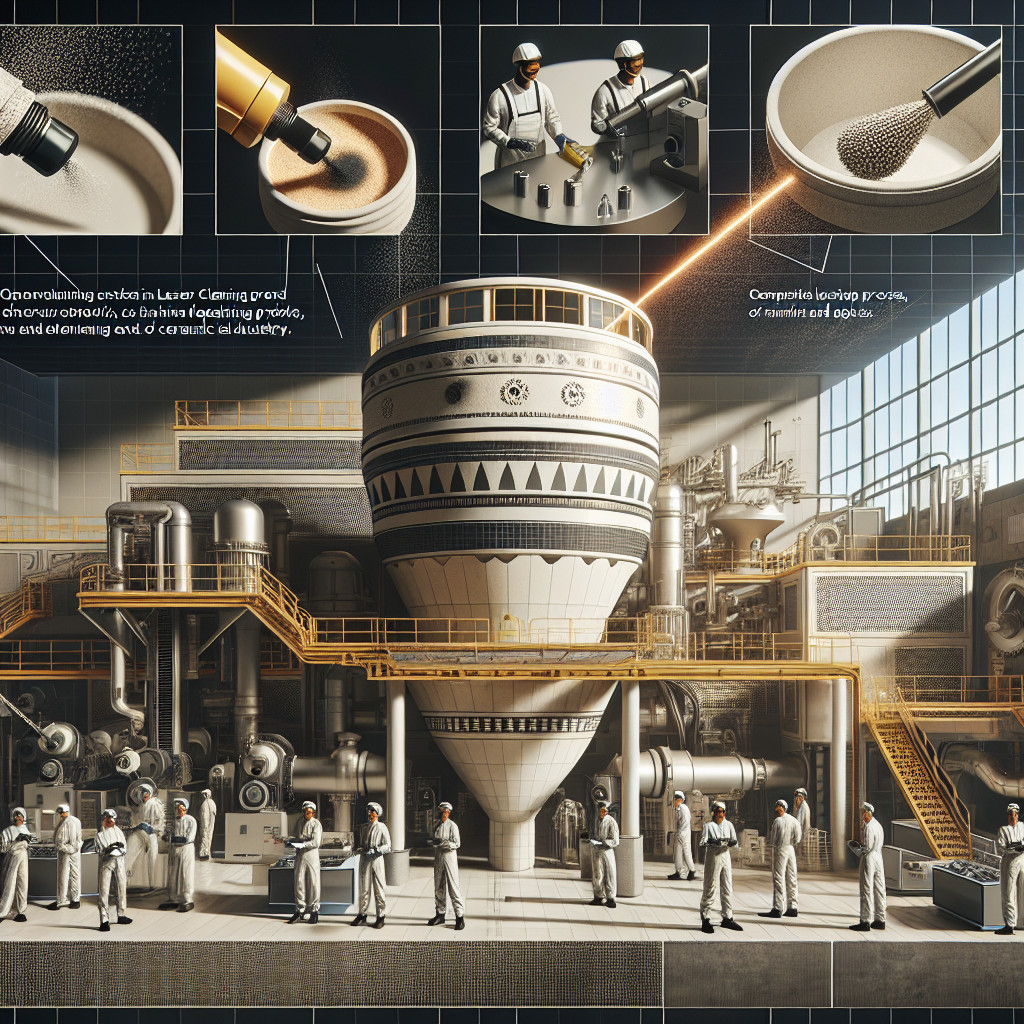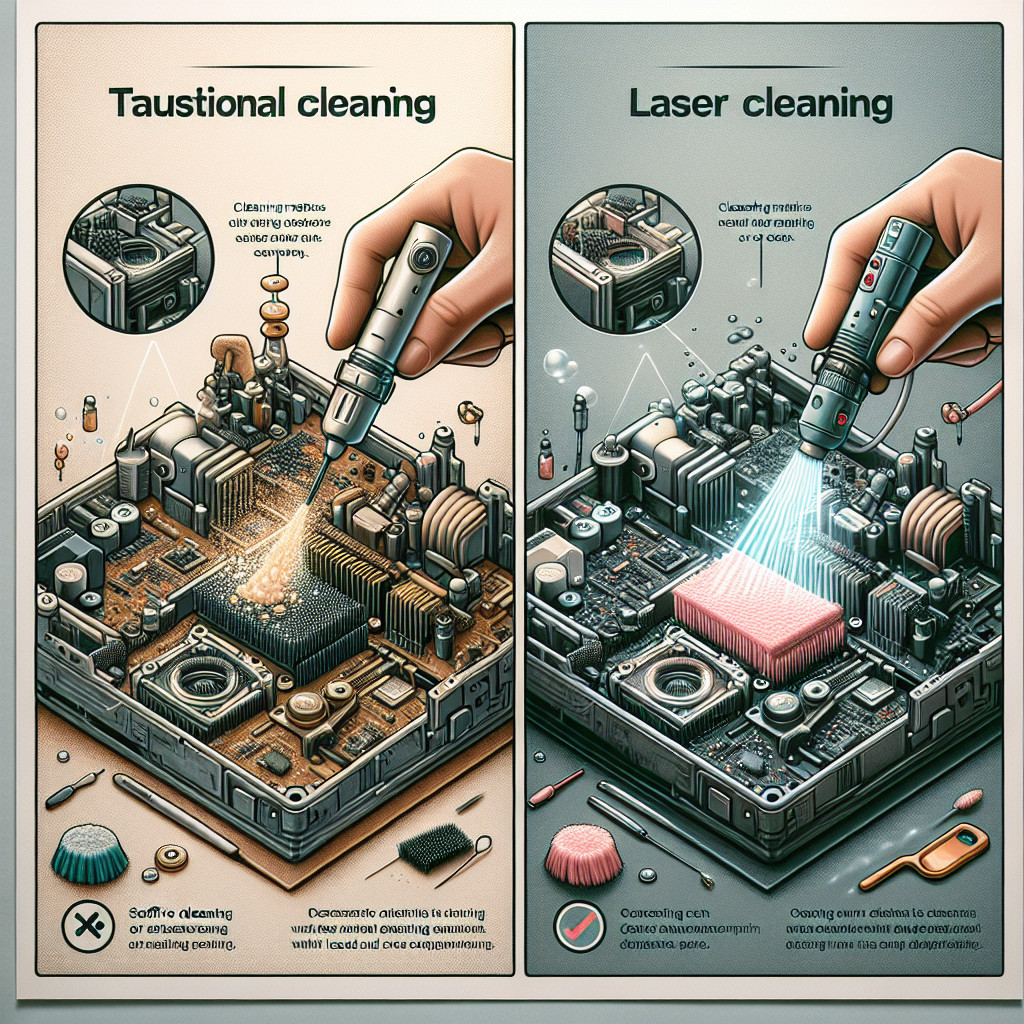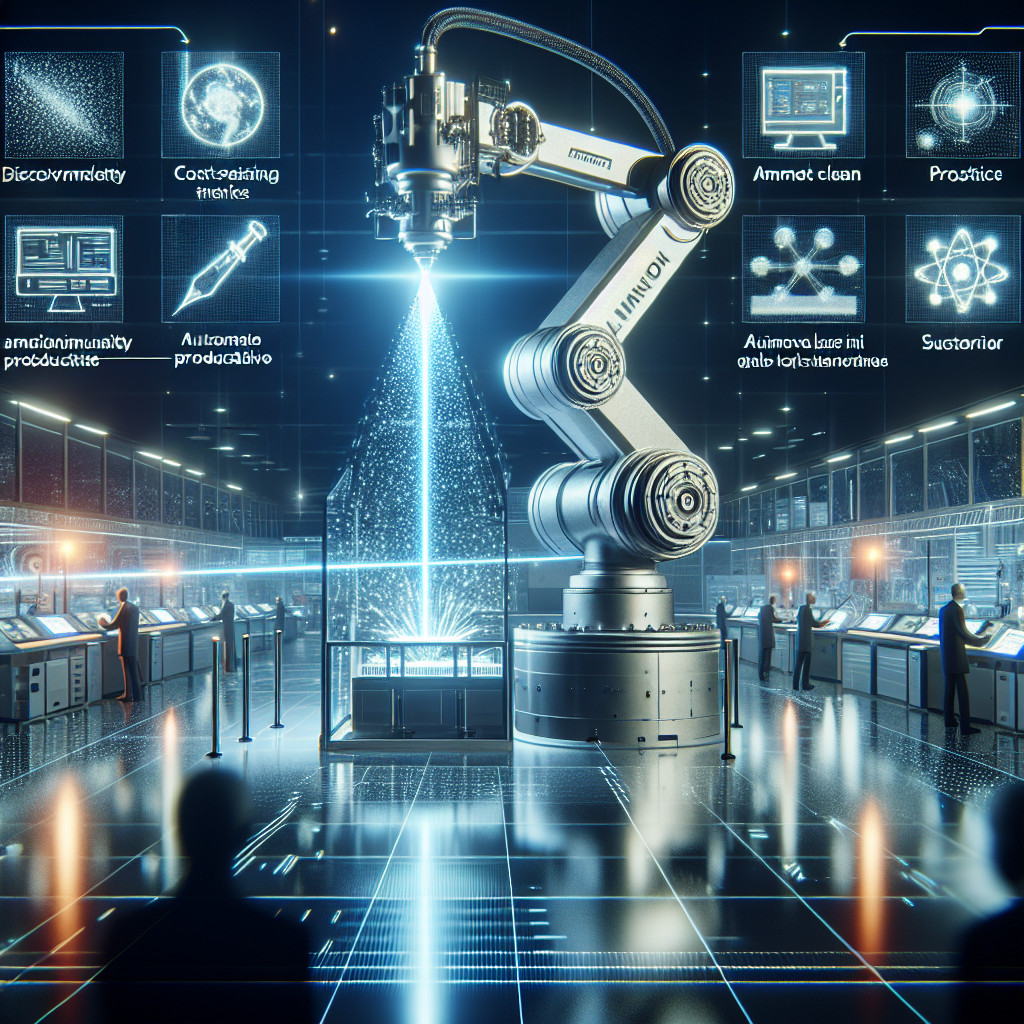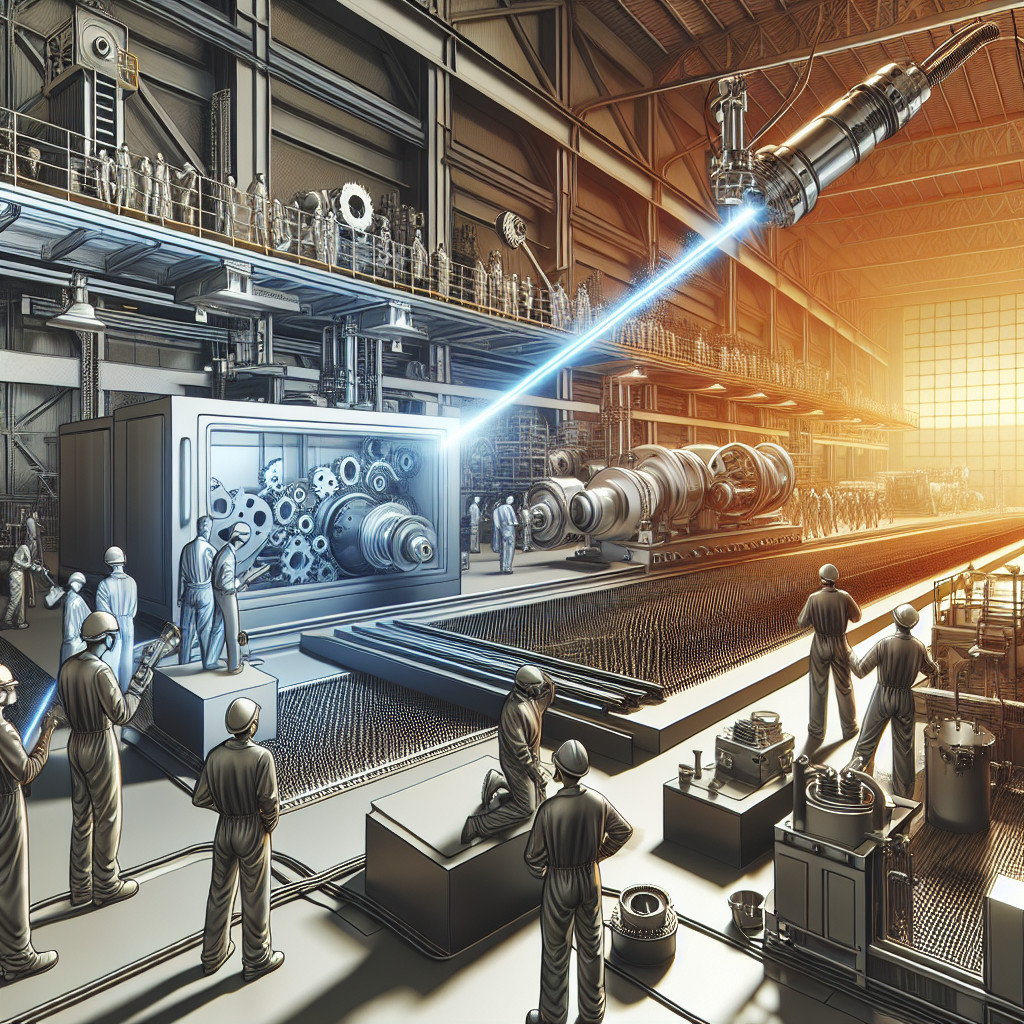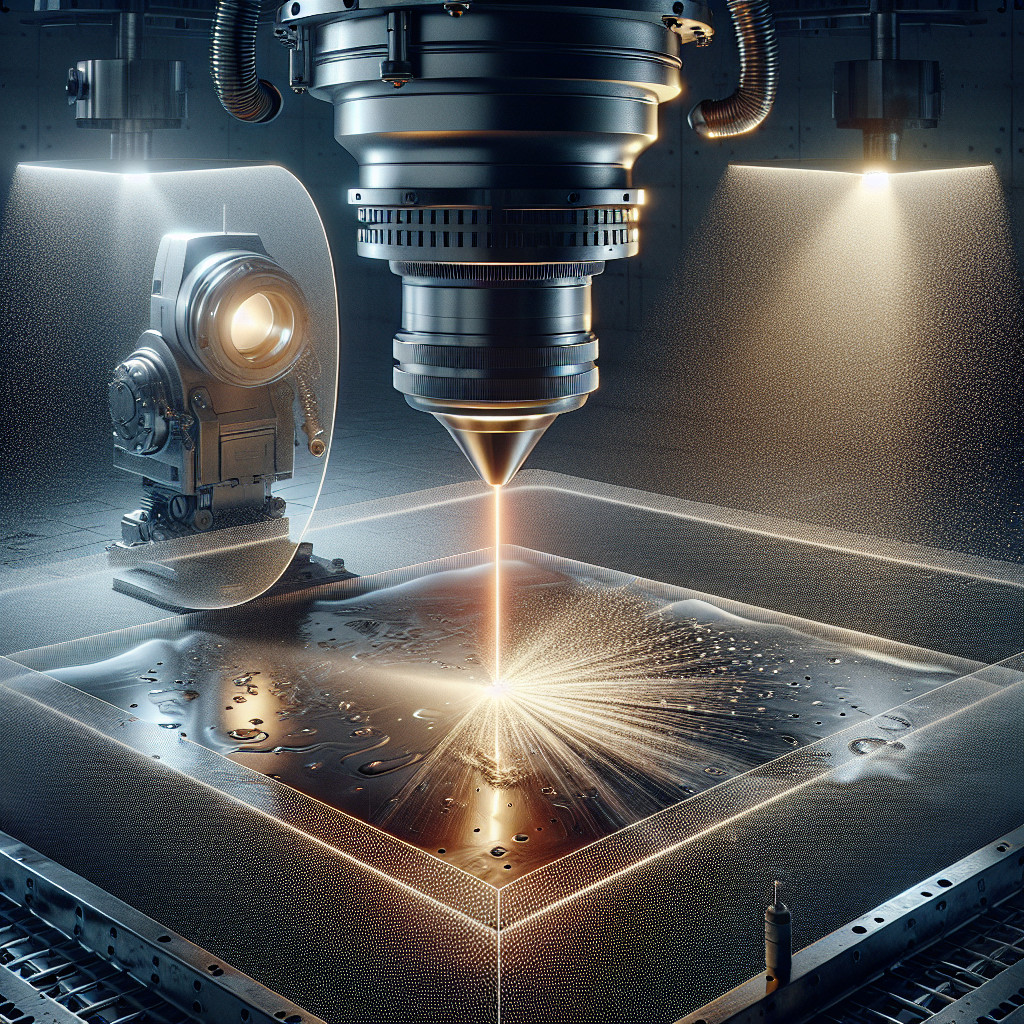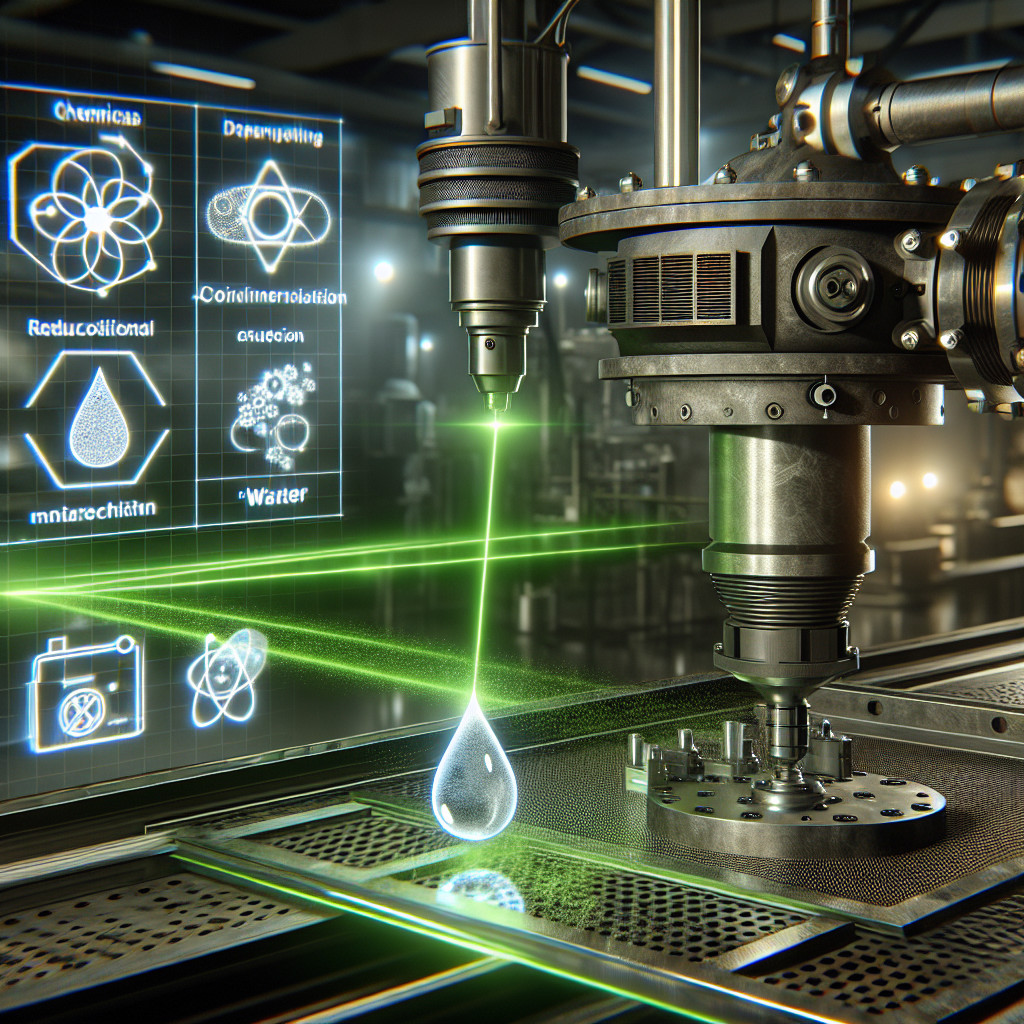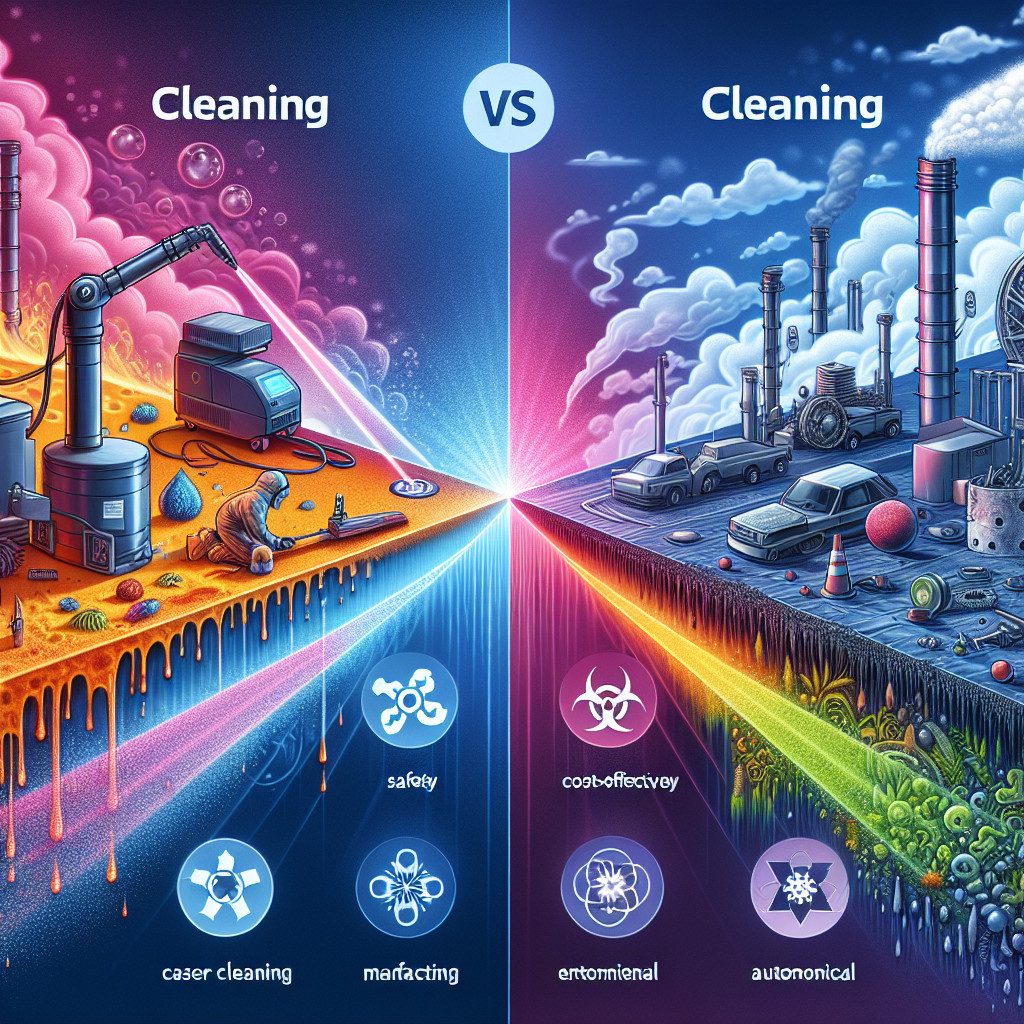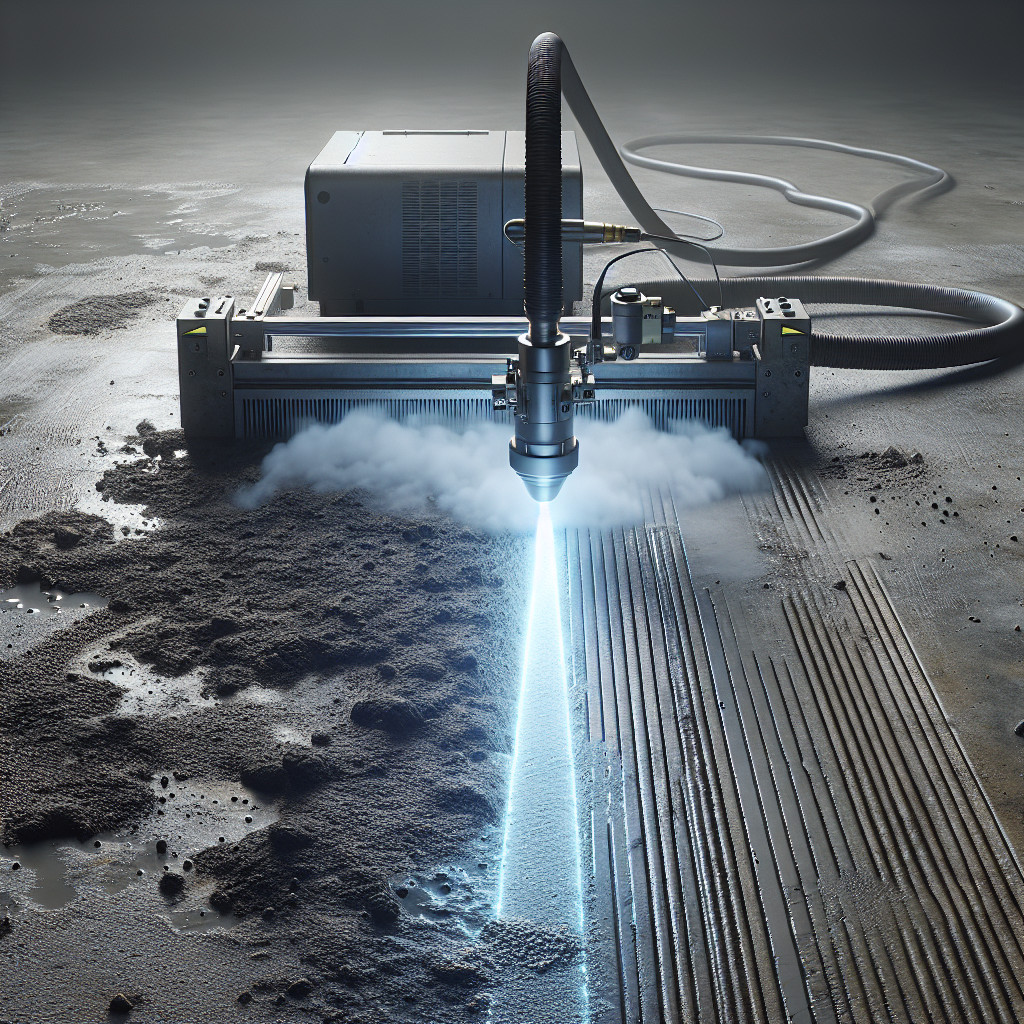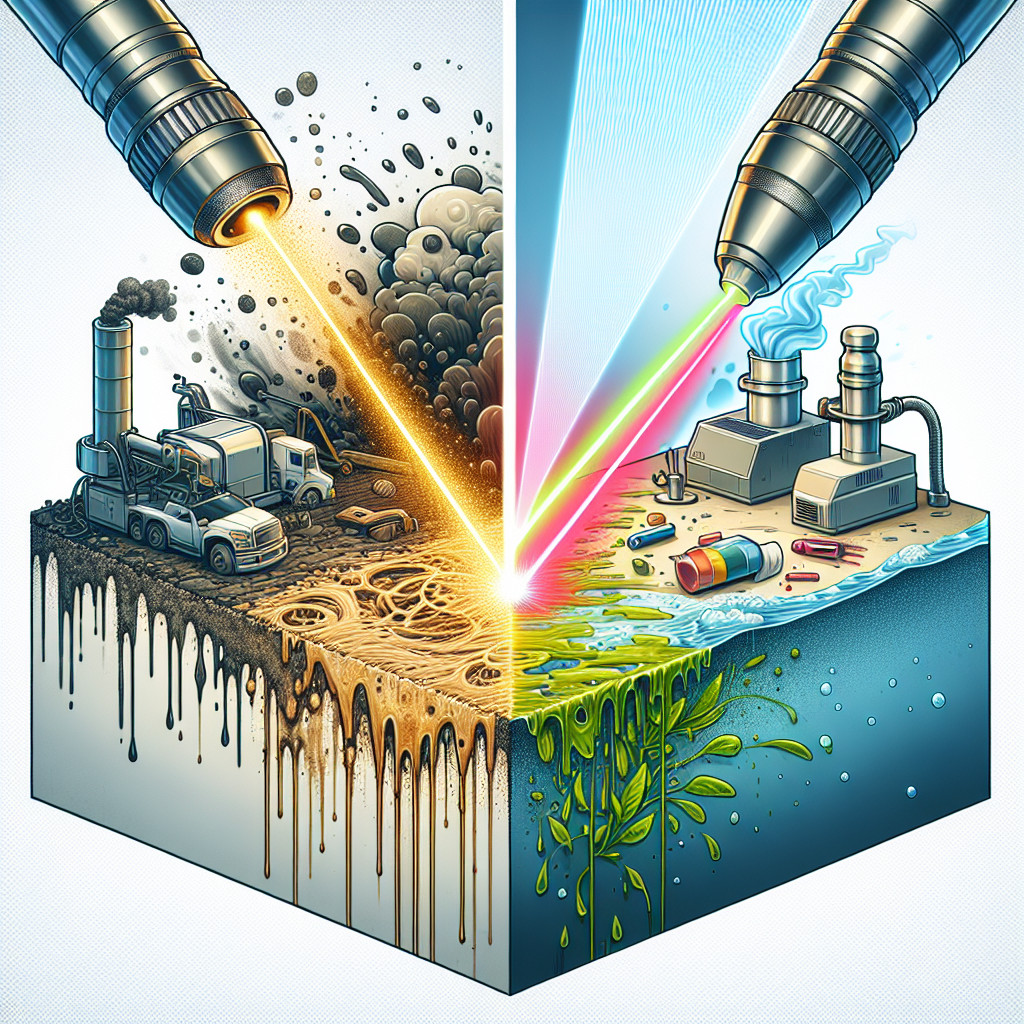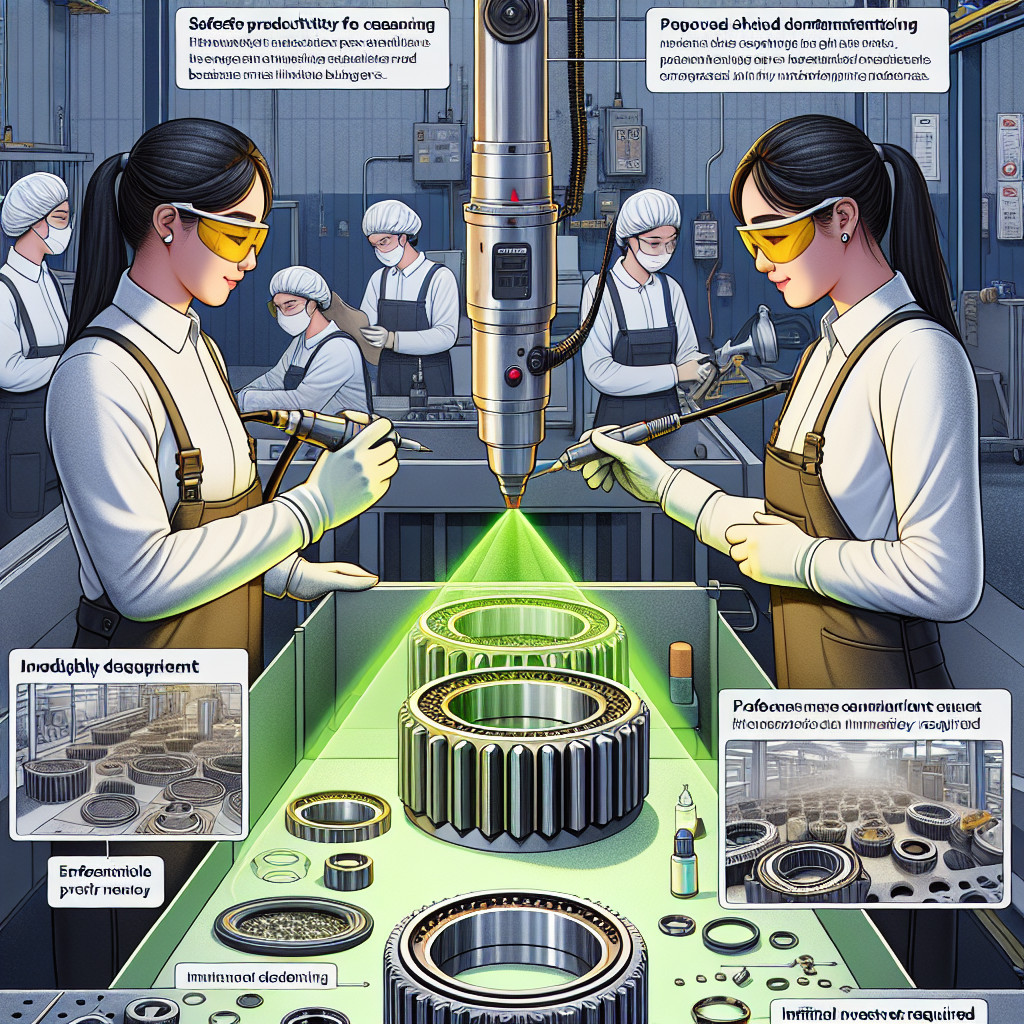- How does laser cleaning work?
- What are the advantages of laser cleaning over traditional cleaning methods?
- How long does laser cleaning take?
- Does laser cleaning produce any harmful byproducts?
- Can laser cleaning be used on wood?
- Can laser cleaning be used on textiles?
- Can laser cleaning be used on concrete?
- Can laser cleaning be used on metal?
How does laser cleaning work?
Laser cleaning utilizes the power of focused laser beams to remove unwanted substances from surfaces. The process involves the interaction between the laser beam and the material being cleaned. When the laser beam hits the surface, it creates a thermal shock that causes the contaminants to vaporize or sublimate, leaving behind a clean and undamaged surface.
The laser cleaning process consists of several steps. First, the surface to be cleaned is analyzed to determine the appropriate laser parameters, such as wavelength, pulse duration, and energy density. These parameters are crucial as they ensure the effective removal of contaminants without damaging the underlying material.
Once the laser parameters are set, the cleaning process begins. The laser beam is directed towards the surface, and as it interacts with the contaminants, it heats them rapidly. This sudden increase in temperature causes the contaminants to expand and break their bond with the surface. The high-energy laser beam also ionizes the contaminants, turning them into plasma.
As the contaminants turn into plasma, they are expelled from the surface by the pressure generated by the laser beam. The plasma is then collected using a vacuum system, preventing it from re-depositing on the cleaned surface. This ensures a thorough and efficient cleaning process.
One of the significant advantages of laser cleaning is its versatility. It can be used on a wide range of materials, including metals, ceramics, plastics, and even delicate surfaces like artwork and historical artifacts. Laser cleaning is non-contact, meaning it does not require physical contact with the surface, reducing the risk of damage or distortion.
Moreover, laser cleaning is a non-abrasive method, unlike traditional cleaning techniques that involve the use of chemicals or abrasive materials. This makes it an ideal choice for sensitive surfaces that cannot withstand harsh cleaning methods. Laser cleaning is also a dry process, eliminating the need for water or solvents, making it environmentally friendly and cost-effective.
The applications of laser cleaning are vast and diverse. In the automotive industry, laser cleaning is used to remove rust, paint, and other coatings from car bodies, preparing them for repainting or welding. It is also used in the aerospace industry to clean turbine blades, removing contaminants that can affect their performance.
In the electronics industry, laser cleaning is employed to remove oxides and other impurities from circuit boards, ensuring their proper functioning. It is also used in the restoration of artwork and historical artifacts, where delicate surfaces require gentle and precise cleaning methods.
In conclusion, laser cleaning is a highly efficient and versatile method for removing contaminants from various surfaces. Its non-contact, non-abrasive, and environmentally friendly nature make it an attractive choice for industries that require precise and thorough cleaning. With its ability to remove coatings, impurities, and even rust, laser cleaning has revolutionized the cleaning process, providing a safer and more effective alternative to traditional methods.
Keywords: laser cleaning, contaminants, coatings, impurities, efficiency, precision, environmentally friendly, focused laser beams, thermal shock, vaporize, sublimate, laser parameters, wavelength, pulse duration, energy density, ionizes, plasma, vacuum system, versatility, metals, ceramics, plastics, artwork, historical artifacts, non-contact, non-abrasive, automotive industry, aerospace industry, electronics industry, restoration, rust, oxides, circuit boards.
Long-tail phrases: laser cleaning process, laser cleaning applications, non-contact cleaning method, environmentally friendly cleaning, laser cleaning in the automotive industry, laser cleaning in the aerospace industry, laser cleaning in the electronics industry, laser cleaning for restoration, advantages of laser cleaning, precision cleaning method.
What are the advantages of laser cleaning over traditional cleaning methods?
Another significant advantage of laser cleaning is its precision and accuracy. Laser beams can be precisely controlled to target specific areas or contaminants on a surface, allowing for selective cleaning. This level of precision is particularly beneficial when dealing with intricate or complex objects that require detailed cleaning. Traditional cleaning methods often struggle to reach tight corners or crevices, but laser cleaning can easily access these hard-to-reach areas, ensuring a thorough and comprehensive cleaning process.
Furthermore, laser cleaning is an environmentally friendly option compared to traditional cleaning methods. Traditional cleaning methods often involve the use of harsh chemicals or solvents that can be harmful to both the environment and human health. Laser cleaning, on the other hand, is a dry and chemical-free process. It relies solely on the energy of the laser beam to remove contaminants, eliminating the need for any additional cleaning agents. This not only reduces the environmental impact but also makes laser cleaning a safer and healthier option for both the operators and the surrounding environment.
In addition to its environmental benefits, laser cleaning also offers significant time and cost savings. Traditional cleaning methods often require extensive preparation, such as disassembling machinery or protecting surrounding areas from chemical spills. Laser cleaning eliminates the need for such preparations, as it can be performed directly on the surface without any additional setup. Moreover, laser cleaning is a highly efficient process that can remove contaminants in a fraction of the time compared to traditional methods. This increased efficiency translates into reduced labor costs and shorter downtime for businesses, making laser cleaning a more economical choice in the long run.
To summarize, laser cleaning offers several advantages over traditional cleaning methods. Its non-contact nature ensures that delicate surfaces remain undamaged, while its precision allows for targeted cleaning of intricate objects. Laser cleaning is also environmentally friendly, as it does not require the use of chemicals or solvents. Additionally, it saves time and money due to its efficiency and reduced preparation requirements. Overall, laser cleaning is a superior alternative that provides a safer, more effective, and cost-efficient cleaning solution for a wide range of applications.
Keywords: laser cleaning, advantages, traditional cleaning methods, non-contact, precision, accuracy, environmentally friendly, time savings, cost savings.
Long-tail phrases: laser cleaning vs traditional cleaning methods, benefits of laser cleaning, why choose laser cleaning over traditional methods, laser cleaning advantages and disadvantages, laser cleaning applications, laser cleaning technology.
How long does laser cleaning take?
For smaller surfaces or objects, such as jewelry or small machine parts, laser cleaning can be completed in a matter of minutes. The laser beam is directed at the surface, and as it interacts with the contaminants, it vaporizes or ablates them, leaving behind a clean surface. The speed of the laser beam and the number of passes required will determine the overall cleaning time.
On the other hand, larger surfaces, such as building facades or industrial equipment, may require more time for laser cleaning. In these cases, the cleaning process is usually carried out in sections or zones, with each section taking a certain amount of time to complete. The laser beam is scanned over the surface, and as it moves, it removes the contaminants. The time required for cleaning a large surface can range from a few hours to several days, depending on the complexity and size of the project.
It is important to note that laser cleaning is a highly precise and controlled process. The laser beam can be adjusted to different power levels and spot sizes, allowing for customization based on the specific cleaning requirements. This flexibility ensures that the cleaning process is efficient and thorough, regardless of the surface or contaminants being treated.
In addition to the factors mentioned above, the type of laser being used also plays a role in determining the cleaning time. Different lasers have varying power outputs and pulse durations, which can affect the speed and efficiency of the cleaning process. For example, high-power lasers with shorter pulse durations are generally faster at removing contaminants compared to lower-power lasers with longer pulse durations.
To summarize, the duration of laser cleaning depends on the size and condition of the surface, the type and thickness of the contaminants, the power and type of laser being used, and the desired level of cleanliness. While smaller objects can be cleaned in minutes, larger surfaces may require several hours or even days to complete. However, regardless of the size or complexity of the project, laser cleaning offers a fast, efficient, and precise cleaning solution.
Keywords: laser cleaning, contaminants, rust, paint, surfaces, non-contact, non-abrasive, environmentally friendly, cleaning solution, power, type, duration, size, condition, efficiency, vaporizes, ablates, speed, passes, building facades, industrial equipment, sections, zones, project, precise, controlled, spot sizes, customization, power outputs, pulse durations, cleanliness.
Long-tail phrases:
– How long does laser cleaning take on large surfaces?
– What factors affect the duration of laser cleaning?
– Can laser cleaning be completed quickly?
– Is laser cleaning suitable for small objects?
– How does the power and type of laser affect the cleaning time?
Does laser cleaning produce any harmful byproducts?
Jednym z głównych powodów, dla których czyszczenie laserowe jest tak popularne, jest fakt, że nie wymaga użycia żadnych substancji chemicznych. Oznacza to, że nie ma potrzeby stosowania żadnych środków czyszczących, które mogłyby generować szkodliwe opary lub odpady. Czyszczenie laserowe jest więc ekologiczne i niezwykle bezpieczne dla środowiska.
Ponadto, czyszczenie laserowe jest również bezpieczne dla operatora. Wiązka laserowa jest skierowana na powierzchnię, a nie na człowieka, co minimalizuje ryzyko wystąpienia jakichkolwiek obrażeń. Operator musi jednak przestrzegać odpowiednich procedur bezpieczeństwa, takich jak noszenie specjalnych okularów ochronnych, aby chronić oczy przed promieniowaniem laserowym.
Warto również wspomnieć, że czyszczenie laserowe może być stosowane na różnych powierzchniach, takich jak metal, drewno, kamień czy szkło. Niezależnie od rodzaju powierzchni, proces ten nie powoduje żadnych szkód ani deformacji. Jest to zatem idealne rozwiązanie dla delikatnych i wartościowych przedmiotów, które wymagają dokładnego czyszczenia bez ryzyka uszkodzeń.
Podsumowując, czyszczenie laserowe nie generuje żadnych szkodliwych produktów ubocznych. Jest to ekologiczna i bezpieczna metoda czyszczenia, która nie wymaga użycia żadnych substancji chemicznych. Jest również bezpieczna dla operatora i nie powoduje uszkodzeń powierzchni. Czyszczenie laserowe jest zatem doskonałym rozwiązaniem dla wielu branż, które wymagają skutecznego i precyzyjnego czyszczenia.
Słowa kluczowe: czyszczenie laserowe, szkodliwe produkty uboczne, ekologiczne, bezpieczne, substancje chemiczne, operator, powierzchnia, metal, drewno, kamień, szkło, deformacja, delikatne przedmioty, wartościowe przedmioty, skuteczne, precyzyjne.
Frazy kluczowe:
– Czyszczenie laserowe – nowoczesna metoda usuwania zanieczyszczeń,
– Ekologiczne czyszczenie laserowe bez substancji chemicznych,
– Bezpieczne czyszczenie laserowe dla operatora i powierzchni,
– Czyszczenie laserowe – idealne rozwiązanie dla delikatnych przedmiotów,
– Skuteczne i precyzyjne czyszczenie laserowe dla różnych branż.
Can laser cleaning be used on wood?
To overcome this challenge, laser cleaning systems designed for wood typically use lower power settings and shorter pulse durations to minimize the heat generated. Additionally, the laser beam is often defocused to distribute the energy over a larger area, reducing the risk of localized damage. These adjustments help to ensure that the wood is not harmed during the cleaning process.
Another important consideration when using laser cleaning on wood is the type of contaminants being removed. Laser cleaning is most effective for removing organic materials such as paint, varnish, or dirt. These contaminants can be easily vaporized or ablated by the laser beam without causing significant damage to the wood surface.
However, laser cleaning may not be suitable for removing certain types of stains or deep-seated contaminants that have penetrated the wood fibers. In such cases, alternative cleaning methods like sanding or chemical treatments may be more appropriate.
Despite these limitations, laser cleaning can offer several advantages when used on wood. Firstly, it is a non-contact cleaning method, which means that there is no physical contact between the cleaning tool and the wood surface. This eliminates the risk of scratching or damaging the wood during the cleaning process.
Secondly, laser cleaning is a dry cleaning method, which means that it does not involve the use of water or chemicals. This can be particularly beneficial for delicate or antique wood surfaces that may be sensitive to moisture or chemical reactions.
Furthermore, laser cleaning is a highly precise and controlled cleaning method. The laser beam can be easily adjusted to target specific areas or contours on the wood surface, allowing for selective cleaning without affecting the surrounding areas. This level of precision is especially valuable when working on intricate or detailed woodwork.
In conclusion, laser cleaning can be used on wood surfaces with caution and proper adjustments. Lower power settings, shorter pulse durations, and defocused laser beams are necessary to prevent damage to the wood. Laser cleaning is most effective for removing organic contaminants, but may not be suitable for deep stains or ingrained dirt. Despite its limitations, laser cleaning offers non-contact, dry, and precise cleaning advantages for wood surfaces.
Keywords: laser cleaning, wood, heat sensitivity, organic contaminants, non-contact cleaning, dry cleaning, precision cleaning.
Long-tail phrases:
– Can laser cleaning be used on antique wooden furniture?
– Is laser cleaning safe for delicate wood surfaces?
– How does laser cleaning compare to traditional wood cleaning methods?
– What are the limitations of laser cleaning on wood?
– Can laser cleaning remove deep stains from wood?
– What precautions should be taken when using laser cleaning on wood?
Can laser cleaning be used on textiles?
Laserowe czyszczenie opiera się na zjawisku ablacji, czyli odparowywaniu lub odparowywaniu materiału pod wpływem intensywnego promieniowania laserowego. Proces ten polega na skierowaniu wiązki lasera na powierzchnię, która ma zostać oczyszczona, co powoduje odparowanie zanieczyszczeń lub warstwy materiału. Ta metoda jest wyjątkowo precyzyjna i nieinwazyjna, co oznacza, że nie powoduje uszkodzeń ani deformacji czyszczonego materiału.
W przypadku tekstyliów, laserowe czyszczenie może być stosowane do usuwania różnych rodzajów zanieczyszczeń, takich jak plamy, kurz, pyłki czy nawet farby. Dzięki precyzyjnemu sterowaniu wiązką lasera, można skoncentrować działanie na konkretnych obszarach, co pozwala na skuteczne usunięcie zanieczyszczeń bez uszkadzania tkaniny. Ponadto, laser może być dostosowany do różnych rodzajów tekstyliów, takich jak bawełna, jedwab, wełna czy syntetyki, co czyni go wszechstronnym narzędziem do czyszczenia.
Jednak istnieje kilka czynników, które należy wziąć pod uwagę przy stosowaniu laserowego czyszczenia na tekstyliach. Po pierwsze, nie wszystkie rodzaje tekstyliów są odpowiednie do tego procesu. Niektóre materiały, takie jak poliester czy nylon, mogą być podatne na uszkodzenia lub zmiany koloru pod wpływem intensywnego promieniowania laserowego. Dlatego ważne jest, aby przeprowadzić testy przed zastosowaniem tej metody na większą skalę.
Po drugie, laserowe czyszczenie może być bardziej skuteczne w usuwaniu pewnych rodzajów zanieczyszczeń niż innych. Na przykład, plamy spowodowane przez olej lub tłuszcz mogą być trudniejsze do usunięcia za pomocą lasera niż plamy pochodzące od wina czy kawy. Dlatego warto rozważyć inne metody czyszczenia w przypadku trudnych plam.
Mimo tych ograniczeń, laserowe czyszczenie tekstyliów ma wiele zalet. Po pierwsze, jest to metoda ekologiczna, ponieważ nie wymaga stosowania żadnych chemicznych środków czyszczących. Po drugie, jest to proces nieinwazyjny, który nie powoduje uszkodzeń ani deformacji materiału. Po trzecie, laserowe czyszczenie jest bardzo precyzyjne i skuteczne, co pozwala na dokładne usunięcie zanieczyszczeń.
Wnioskiem jest to, że laserowe czyszczenie może być stosowane na tekstyliach, ale z pewnymi zastrzeżeniami. Ważne jest, aby przeprowadzić testy i dostosować parametry lasera do konkretnego rodzaju materiału. Jednak jeśli zostaną spełnione odpowiednie warunki, laserowe czyszczenie może być skuteczną i innowacyjną metodą czyszczenia tekstyliów.
Słowa kluczowe: laserowe czyszczenie, tekstylia, ablacja, zanieczyszczenia, plamy, precyzja, ekologia.
Frazy kluczowe: czy laserowe czyszczenie jest skuteczne na tekstyliach, jakie są zalety laserowego czyszczenia tekstyliów, jakie są ograniczenia laserowego czyszczenia na tekstyliach, jakie są inne metody czyszczenia tekstyliów, jakie są rodzaje tekstyliów odpowiednie do laserowego czyszczenia.
Can laser cleaning be used on concrete?
When it comes to concrete, laser cleaning has shown great potential. Concrete surfaces are often exposed to harsh environmental conditions, leading to the accumulation of dirt, grime, and pollutants. Additionally, graffiti vandalism is a common issue in urban areas, and removing graffiti from concrete surfaces can be time-consuming and costly. Laser cleaning offers a fast, efficient, and eco-friendly solution to these problems.
One of the main advantages of laser cleaning on concrete is its ability to remove contaminants without causing damage to the surface. Unlike traditional cleaning methods that may erode or etch the concrete, laser cleaning selectively targets the contaminants, leaving the concrete intact. This is particularly important for delicate or historical concrete structures where preserving the original surface is crucial.
Another benefit of laser cleaning is its versatility. Laser systems can be adjusted to different power levels, pulse durations, and wavelengths, allowing for customization based on the specific cleaning requirements. This flexibility makes laser cleaning suitable for a wide range of concrete surfaces, including walls, floors, pavements, and statues.
Furthermore, laser cleaning is a safe and environmentally friendly method. It does not involve the use of chemicals or abrasive materials, reducing the risk of harmful residues or waste generation. The process is also non-contact, minimizing the physical strain on the operator and eliminating the need for direct contact with potentially hazardous substances.
However, it is important to note that laser cleaning may not be suitable for all types of concrete surfaces. The effectiveness of laser cleaning depends on factors such as the composition and condition of the concrete, the type and thickness of the contaminants, and the laser parameters used. In some cases, multiple laser passes or the combination of laser cleaning with other methods may be necessary to achieve the desired results.
In conclusion, laser cleaning has emerged as a promising technology for cleaning concrete surfaces. Its ability to remove contaminants without damaging the underlying material, versatility, and eco-friendly nature make it an attractive option for various applications. However, it is essential to consider the specific requirements of each cleaning project and consult with experts to determine the feasibility and effectiveness of laser cleaning.
Keywords: laser cleaning, concrete surfaces, contaminants, graffiti removal, non-abrasive, non-contact, selective cleaning, preservation, versatility, eco-friendly.
Long-tail phrases:
– Laser cleaning as an alternative method for concrete surface cleaning
– The benefits of laser cleaning on concrete surfaces
– Customization options for laser cleaning on concrete
– Safety and environmental advantages of laser cleaning
– Factors influencing the effectiveness of laser cleaning on concrete surfaces
– Combining laser cleaning with other methods for optimal results.
Can laser cleaning be used on metal?
When it comes to metal surfaces, laser cleaning offers several advantages over traditional cleaning methods. Firstly, it provides a precise and controlled cleaning process, allowing for selective removal of contaminants without affecting the integrity of the metal. This is particularly important for delicate or intricate metal structures where traditional cleaning methods may cause damage.
Secondly, laser cleaning is a highly efficient method that can remove a wide range of contaminants, including rust, paint, grease, and oxides, from metal surfaces. The laser beam can be adjusted to different wavelengths and intensities, making it suitable for various types of metals and contaminants. This versatility makes laser cleaning an attractive option for industries such as automotive, aerospace, and manufacturing, where maintaining clean and corrosion-free metal surfaces is crucial.
Furthermore, laser cleaning is an environmentally friendly process as it does not involve the use of chemicals or generate hazardous waste. Traditional cleaning methods often rely on harsh chemicals that can be harmful to both human health and the environment. Laser cleaning eliminates the need for these chemicals, making it a safer and more sustainable alternative.
However, it is important to note that laser cleaning may not be suitable for all types of metals. Some metals, such as copper and aluminum, have high reflectivity and thermal conductivity, which can limit the effectiveness of laser cleaning. In such cases, alternative cleaning methods may be more appropriate.
In conclusion, laser cleaning can indeed be used on metal surfaces with great success. Its precision, efficiency, and environmental friendliness make it an attractive option for industries and applications where maintaining clean and corrosion-free metal surfaces is essential. However, it is crucial to consider the specific properties of the metal being cleaned to ensure optimal results.
Keywords: laser cleaning, metal surfaces, contaminants, impurities, laser ablation, traditional cleaning methods, precise cleaning, selective removal, rust, paint, grease, oxides, automotive industry, aerospace industry, manufacturing industry, environmentally friendly, alternative cleaning methods, copper, aluminum, reflectivity, thermal conductivity.
Long-tail phrases:
– Can laser cleaning remove rust from metal surfaces?
– How does laser cleaning compare to traditional cleaning methods for metal?
– Is laser cleaning suitable for delicate metal structures?
– What are the environmental benefits of laser cleaning on metal?
– Are there any limitations to laser cleaning on metal surfaces?
- Laser cleaning and long-term cost savings – cost analysis - February 29, 2024
- Laser cleaning and reducing emissions of harmful substances - February 28, 2024
- Can laser cleaning be used in veterinary medicine? - February 28, 2024



